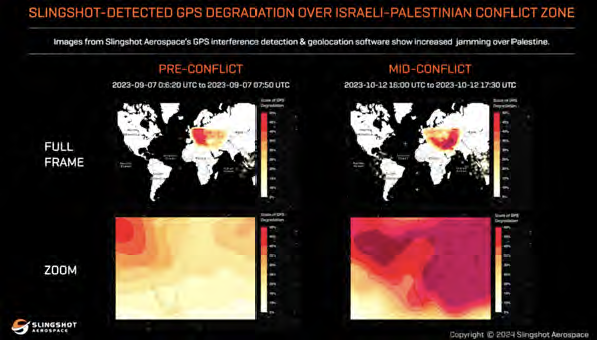Anduril Awarded Defense Production Act Investment To Expand Solid Rocket Motors Industrial Base
Anduril Industries, a non-traditional merchant supplier of Solid Rocket Motors (SRM), has been awarded $14.3 million by the Department of Defense under Title III of the Defense Production Act (DPA) to expand the SRM industrial base.
Strained munitions production underscored by recent global conflicts has led Congress and the Department of Defense to prioritize strengthening the SRM industrial base. This U.S. government investment is compounded by our $75 million investment to produce large volumes of SRMs at reduced costs.
 At the company’s facility in McHenry, Mississippi, Anduril is using this DPA Title III investment to develop and qualify next-generation SRMs that demonstrate its innovative manufacturing technologies, like bladeless speed-mixing, single-piece flow, and advanced manufacturing technologies. This funding will also bolster Anduril’s existing work to design, build, and test second-stage rocket motors for programs of record and other large-scale weapons, including the U.S. Navy’s Standard Missile-6 (SM-6) program.
At the company’s facility in McHenry, Mississippi, Anduril is using this DPA Title III investment to develop and qualify next-generation SRMs that demonstrate its innovative manufacturing technologies, like bladeless speed-mixing, single-piece flow, and advanced manufacturing technologies. This funding will also bolster Anduril’s existing work to design, build, and test second-stage rocket motors for programs of record and other large-scale weapons, including the U.S. Navy’s Standard Missile-6 (SM-6) program.
This funding builds on Anduril’s initial $75 million private capital investment. This combination of private and public resources reflects a shared commitment to addressing America’s urgent need for scalable, high-performance rocket motor production, and it clearly establishes Anduril as the new entrant best positioned to deliver full-rate SRM production capacity on a rapid timeline.
BlueHalo awarded $49.9 million NIWC-Pacific contract for UAS EW sensor systems
BlueHalo has been awarded a five-year contract valued at $49.9 million by the Naval Information Warfare Center (NIWC) Pacific — under this contract, BlueHalo will deliver hardware, materials and components, engineering services, and integration and operational support to the U.S. Navy and U.S. Special Operations Command (USSOCOM) for Modular Payload compliant Electronic Warfare (EW) sensors onboard multiple Uncrewed Aerial Systems (UAS).
 BlueHalo will support the design, upgrade, testing, delivery, and evaluation of complex sensor systems and their integration into various UAS platforms as part of the NIWC Pacific’s work to sustain sensor operations with repair and replacements and train operators on the use of these sensor systems.
BlueHalo will support the design, upgrade, testing, delivery, and evaluation of complex sensor systems and their integration into various UAS platforms as part of the NIWC Pacific’s work to sustain sensor operations with repair and replacements and train operators on the use of these sensor systems.
BlueHalo has provided sensor systems deployed in a variety of platforms supported and maintained by NIWC Pacific and fielded by U.S. government customers. Enabled through both a modular open system approach (MOSA) and Sensor Open Systems Architecture (SOSA), these sensors have been integrated into multiple programs, including the Group 3 Unmanned Aerial System (G3UAS) program, the USSOCOM Multi-mission Tactical Unmanned Aerial System (MTUAS) program, and Mid-Endurance Unmanned Aerial System (MEUAS) in support of the Joint Threat Warning System (JTWS) Program Office.
“BlueHalo continues to deliver inspired engineering and tactical solutions to help our Nation stay ahead of global threats,” said James Batt, BlueHalo Chief Growth Officer. “NIWC Pacific has relied on our EW sensors to support mission success for more than 15 years. This contract underlines the confidence customers have in BlueHalo to field the very best capabilities when it matters most.”
“EW sensor integrations can be incredibly complex–spanning multiple airframes, information infrastructures, and domains to meet multiple mission needs,” said Mary Clum, BlueHalo Products & Space Systems Portfolio President. “With our technical expertise and superior EW systems, BlueHalo provides customers with the modularity, scalability, and interoperability necessary to support a variety of platforms and configurations.”
BlackSky wins USSF rapid procurement contracts to support TacSRT missions
BlackSky Technology Inc. (NYSE: BKSY) has won multiple rapid procurement contracts for its high-margin, core analytics services through the U.S. Space Force’s online Global Data Marketplace (GDM) supporting a variety of Tactical Surveillance, Reconnaissance and Tracking (TacSRT) missions.
 The GDM has supported Space Systems Command’s TacSRT pilot program and is designed to rapidly provide U.S. military combatant commands with access to insights for critical areas of interest worldwide.
The GDM has supported Space Systems Command’s TacSRT pilot program and is designed to rapidly provide U.S. military combatant commands with access to insights for critical areas of interest worldwide.
The competitive, short duration TacSRT contracts team up multiple commercial data providers to cover specific requests for real-time operational planning products offering insight into global trends and events from violent extremism to humanitarian and disaster response as well as identification of potential threats.
“One year in operation, this novel marketplace increases speed and accessibility to BlackSky’s reliable high-cadence, low-latency dynamic monitoring capabilities,” said Brian O’Toole, BlackSky CEO. “BlackSky’s momentum with these quick-turn contracts represents a significant structural demand signal from a key customer for operationally relevant space-based products. BlackSky has demonstrated repeated success in delivering tailored products featuring our automated AI-driven analytics to meet a diverse set of complex, time-sensitive civil and military tactical SRT missions around the world,” said O’Toole. “The fast-paced, short period of performance aligns with our strengths: rapidly delivering actionable insights from our core product offerings that require minimal integration, lowering customer acquisition costs and accelerating development of new technology.”
U.S. Space Systems Command selects L3Harris to design resilient GPS satellite concepts
L3Harris Technologies (NYSE: LHX) has received a contract from the U.S. Space Force’s Space Systems Command to design concepts for Phase 0 of the Resilient Global Positioning System (R-GPS) program.
 The R-GPS program is a procurement of cost-effective small satellites that will augment the existing 31 satellite GPS constellation providing resilience to military and civil GPS users. Space Force plans to produce and launch up to eight satellites to address jamming, spoofing and more permanent disruptions.
The R-GPS program is a procurement of cost-effective small satellites that will augment the existing 31 satellite GPS constellation providing resilience to military and civil GPS users. Space Force plans to produce and launch up to eight satellites to address jamming, spoofing and more permanent disruptions.
L3Harris is the only company to provide navigation technology for every U.S. GPS satellite ever launched, in addition to designing and building critical elements of the control segment, monitor station receivers and user equipment. This mature technology provides the foundation of the L3Harris R-GPS solution.
L3Harris’ investment in transformational PNT technology uses commercial form factors and interfaces for a modular, scalable solution supporting Space Force needs. L3Harris is also collaborating with the Space Force as the prime contractor on the experimental Navigation Technology Satellite-3 program to develop cutting-edge technology and deliver on accelerated development timelines.
“We are answering the call to protect and defend national security interests by developing and deploying reliable and robust GPS technologies crucial to the warfighter and the global populace,” said Ed Zoiss, President, Space and Airborne Systems, L3Harris. “We will leverage our five decades of experience as a key mission partner providing GPS to deliver a more resilient Positioning, Navigation and Timing (PNT) infrastructure.”
Slingshot Aerospace to provide tech to USSF to detect GPS jamming + spoofing threats
Slingshot Aerospace, Inc. has been awarded $1.9 million from the United States Space Force’s (USSF) Space Systems Command (SSC) to further develop Slingshot’s existing GPS jamming and spoofing detection, as well as more precisely geolocate the sources and predict patterns of interference.
 Intentional GPS spoofing–a malicious technique that manipulates GPS data in order to skew the geolocation of an object–and GPS jamming are used across conflict zones to reduce the effectiveness of combatant technology and often foreshadow future threats to national security.
Intentional GPS spoofing–a malicious technique that manipulates GPS data in order to skew the geolocation of an object–and GPS jamming are used across conflict zones to reduce the effectiveness of combatant technology and often foreshadow future threats to national security.
The new program, PNT-SENTINEL (Positioning, Navigation, and Timing – Secure Electronic Navigation Threat Intelligence and Location), provides Slingshot new funding to enhance its already operational technology by incorporating AI and predictive analytics to more rapidly disseminate insights to warfighters and support faster, more informed decision making.
The PNT-SENTINEL contract was awarded as a Small Business Innovation Research (SBIR) Phase 2 contract by SpaceWERX, a unique space-focused division within the innovation arm of the U.S. Air Force, AFWERX. SSC awarded Slingshot a $1.9 million Phase 1 contract to develop its initial GPS jamming detection capability called DEEP (Data Exploitation and Enhanced Processing) in October of 2021.
The technology produced as a result of the DEEP contract provides the foundation for PNT-SENTINEL and is currently being used by the USSF to detect GPS jamming and ground-based interference sources as they relate to ongoing conflicts, potential future conflict zones, and counter-terrorism efforts.
Today’s global community relies more than ever on the signals from Global Navigation Satellite Systems (GNSS), which are satellite constellations that provide global PNT services. This includes the U.S. GPS system, the European Galileo system, and more. By interfering with those signals, bad actors can hamper satellite operations over a certain region. This interference also impacts ground- and air-based operations, including crewed aircraft, drones, and precision-guided munitions–and disrupts critical services for everything from troops on the ground to commercial airline operations and passenger vehicle navigation.
As part of the contract, Slingshot will leverage its recently announced AI model called Agatha, which helps identify anomalous spacecraft within large satellite constellations, to further explore, develop, and integrate cutting-edge AI into PNT-SENTINEL. By layering AI into Slingshot’s current technology, it will become more robust and automated in its ability to detect and flag jamming and spoofing threats, as well as differentiate between unintentional or anomalous interference and nefarious acts.
Other enhancements to Slingshot’s capabilities include:
• Implementing pattern of life algorithms: Advanced pattern of life recognition will identify, flag, and evaluate active jamming events, and produce predictions on how a particular situation may evolve.
• Multi-GNSS processing: Slingshot will expand beyond monitoring GPS interference and will detect jamming of multiple global navigation satellite systems. The ability to ingest data from multiple GNSS sources allows allied nations to contribute data from their spacecraft to produce a more complete, real-time view of jamming.
• Interoperable with existing warfighter systems: The capability will seamlessly integrate into existing systems, which will enable disseminating information in near-real time so warfighters can make decisions on operationally relevant timeframes to achieve a strategic advantage.
• Enhancements to the user interface: An enhanced user interface will provide an easy-to-use platform that allows warfighters across the U.S. and allied services to easily review and make informed decisions during national security operations.
Slingshot’s GPS jamming and spoofing detection and geolocation capabilities leverage data passively collected by a mesh network of thousands of satellites canvasing the Earth. By collecting degradation signals from thousands of satellites that are constantly canvassing the globe, Slingshot is able to create a near-real-time picture of where GPS jamming is taking place on Earth at any given moment.
This space-based technology provides a more comprehensive view of global jamming conditions compared to existing ground-based detection systems. Legacy ground-based systems tend to have fixed receivers or limited distance receivers, which creates information gaps due to smaller coverage areas and limited deployment options in contested zones on land or at sea.
“Modern military operations rely on space systems like GPS, so it’s no surprise that GPS jamming is already a pervasive threat,” said Tim Solms, Chief Executive Officer, Slingshot Aerospace. “In addition to military operations, the larger global community is also highly reliant on GPS, but jamming and spoofing may not discriminate between military and civilian users – meaning that functions of daily life like financial transactions and commercial air traffic control could also be affected.”
About Slingshot Aerospace
Slingshot Aerospace provides government and commercial partners around the world with AI-powered solutions for satellite tracking, space traffic coordination, and space modeling and simulation. The Slingshot Platform transforms disparate space data into a common operating picture of the space domain by leveraging advanced space object tracking, artificial intelligence, astrodynamics, and data fusion. Slingshot’s platform combines data from the Slingshot Global Sensor Network, the Slingshot Seradata satellite and launch database, satellite owner-operators, and other third-party space data providers to create a holistic and dynamic view of space for training, planning, and operations.


